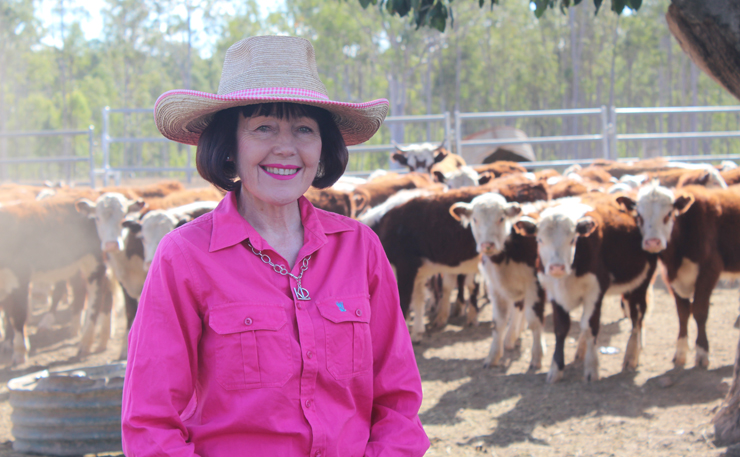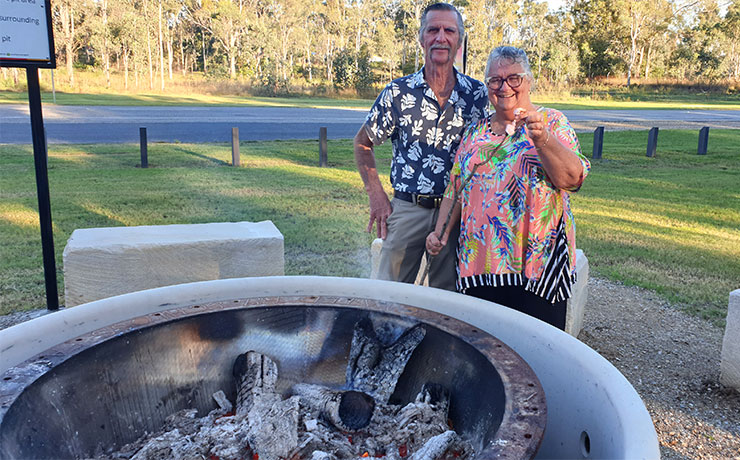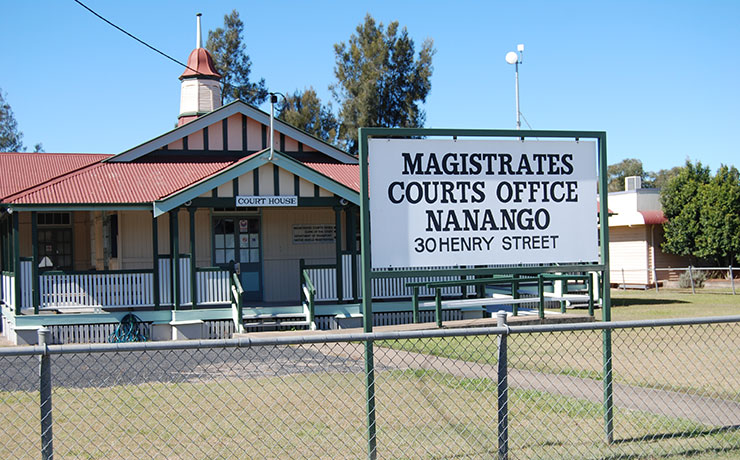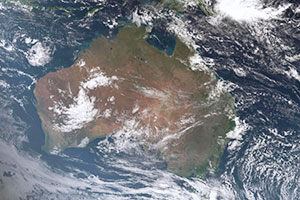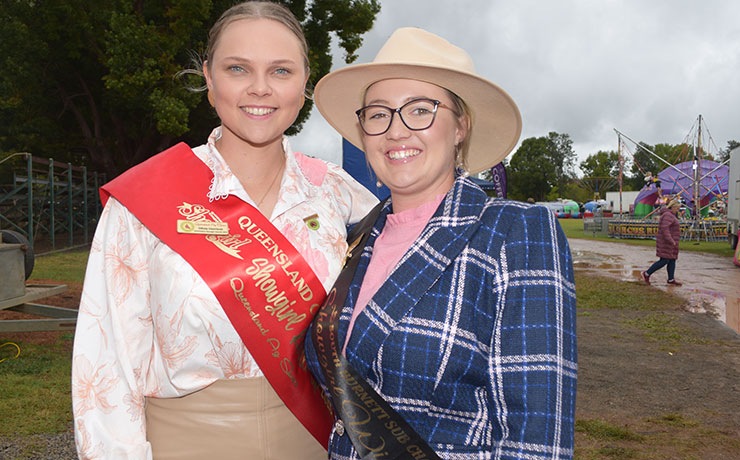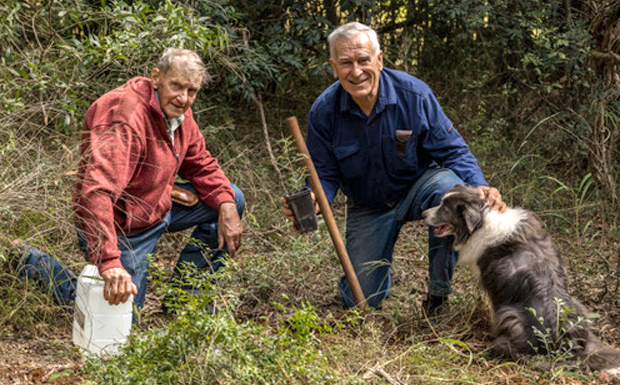
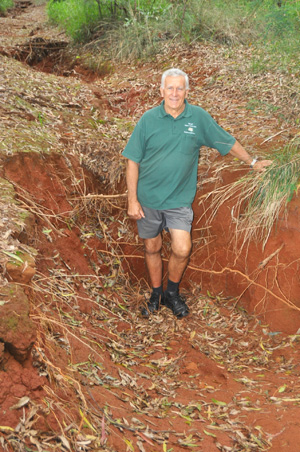
May 29, 2018
Run-off problems from Kingaroy’s Summit View Estate may not have been eliminated but the worst effects on rare plants growing near the residential estate at least appear to have been solved.
Stormwater flows from Summit View have been blamed for causing issues for other residents living nearby ever since the estate’s first stage opened on top of Mt Jones in the early 2000s.
When the estate was initially proposed in the late 1990s, the former Kingaroy Shire Council refused to give it development approval because of water run-off concerns.
However, Summit View’s original developer took the Council to the Planning and Environment Court and gained approval to proceed.
Ever since then, property owners living along the northern section of Tessmans Road North have blamed the estate for flooding during wet weather.
Even small falls of 25mm have been enough to cause issues.
To make the matter even more complex, the southern portion of Tessmanns Road North is home to one of Australia’s most critically endangered plants, the Mt Berryman Phebalium (Phebalium distans).
Run-off along the road and erosion have posed a significant threat to its continued survival.
The southern portion of the road is closed to motor vehicles and motorcycles, but still remains a gazetted road which Council is obliged to maintain.
South Burnett Regional Council engineers have previously estimated it would cost between $1.2 million to $1.8 million to find a permanent fix to the road’s drainage problems.
However, the Council has never had the funds available to do this.
As a compromise, in December 2015, Council announced it would commit $200,000 towards building a series of mini weirs to slow up the water flows from the estate.
The weirs and several berms in the northern section of the road have helped reduce erosion, but not downstream flooding impacts.
Volunteers from Conservation Volunteers Australia (CVA) and Native Plants Queensland (NPQ) also stepped in to lend a hand recently.
Late last year, CVA volunteers under the guidance of Council officers performed the arduous task of wheel-barrowing tonnes of broken rock along the southern section.
The group laid geotextile sheeting in the eroded parts of the road, then placed broken rocks on top of the sheeting to create a culvert.
After this, they filled wire cages with broken rocks, which were then placed in a V-shape to direct storm water down the centre of the road.
The aim of the work was to prevent storm water from detouring around the sides of the channel and causing new erosion.
Members of the Society For Growing Australian Plants, who have campaigned for a fix to Tessmanns Road’s problems for years, recently inspected the project and gave it their tick of approval.
Since the remedial work was completed in late 2017, several storm and rain events have occurred – including last year’s Boxing Day storms – but SGAP say indications so far are that it has been a success in minimising further erosion.
Debris in the form of leaf litter and fallen branches has built up against the wire baskets, and silt has been deposited in between the rocks.
SGAP say both these things are a good indication the velocity of water flowing along the channel has been reduced.
As well as the remedial work, other volunteers from the Kingaroy and Districts branch of Native Plants Queensland removed weeds from the road’s edges and planted native plants to make up for those destroyed by earlier flooding events.
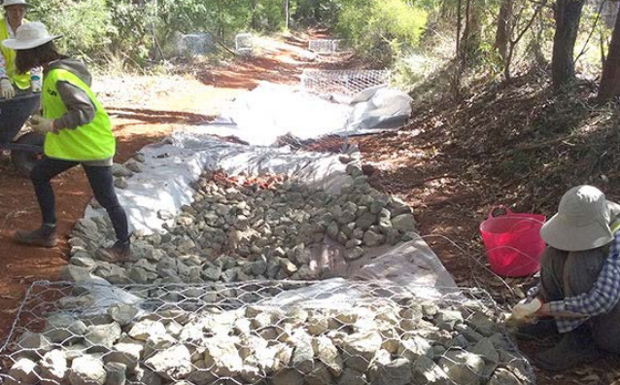
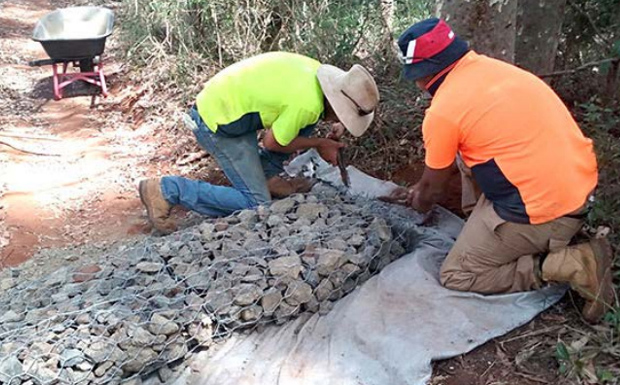
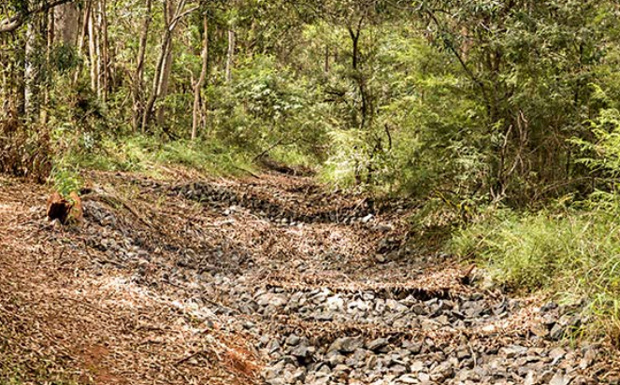
[Photos: SGAP]
* * *
But Not All Problems Have Been Solved …
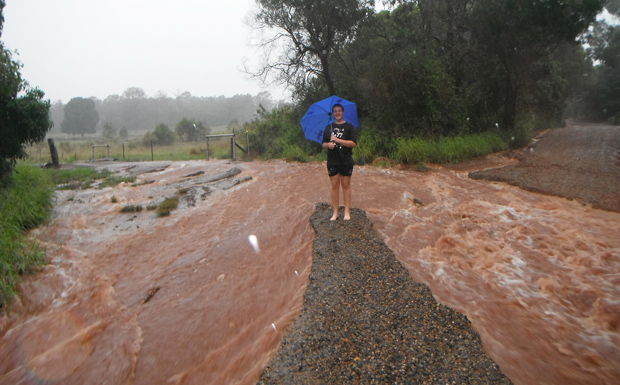
Water run-off problems affecting residents who live along the northern section of the road are still ongoing.
A landholder who spoke to southburnett.com.au on condition of anonymity said while they agreed the recent work appeared to have solved the threat stormwater was posing to the Mt Berryman phebaliums, it had done nothing to help property owners living further down the road.
“The new work will prevent further erosion near these plants, and that’s a good thing,” they said.
“But once the water has passed through the southern section, it comes out in a torrent and we still get flooded.
“This has been going on for more than 15 years and all the owners living along the northern part of this road have spent a lot of money repairing flood damage and having our livelihoods disrupted during this time.
“Our Council really needs to do something about this.”
Related articles:














